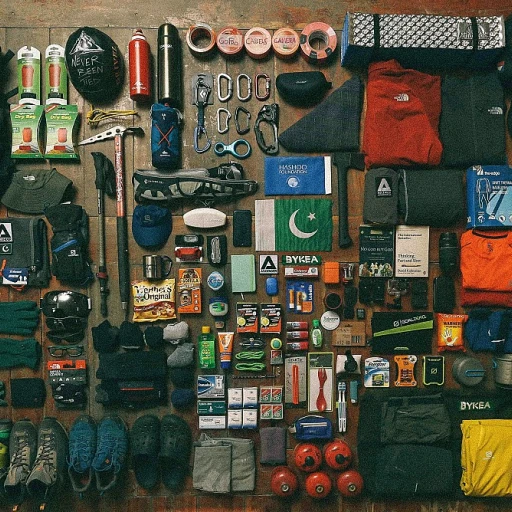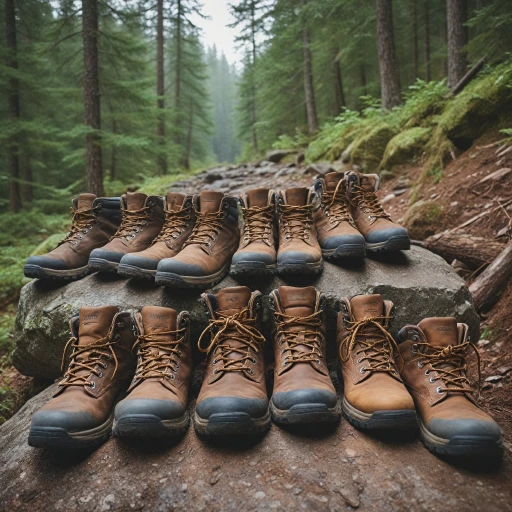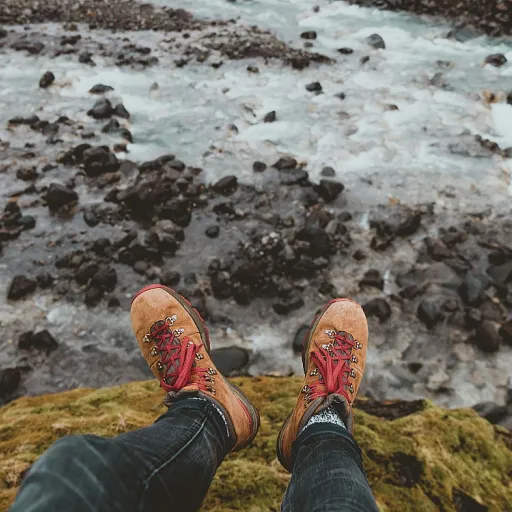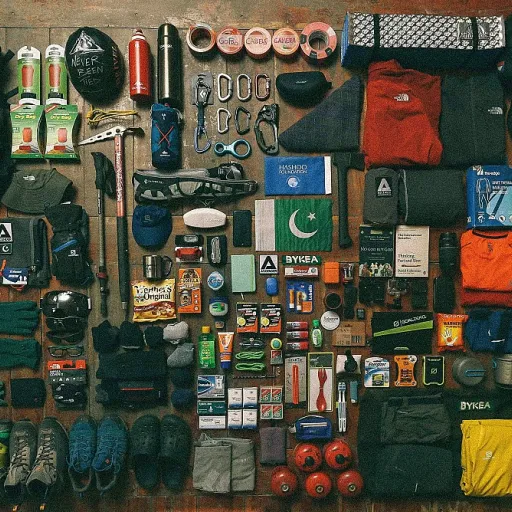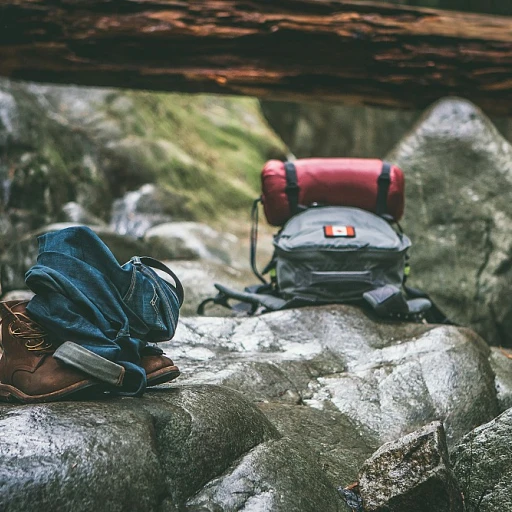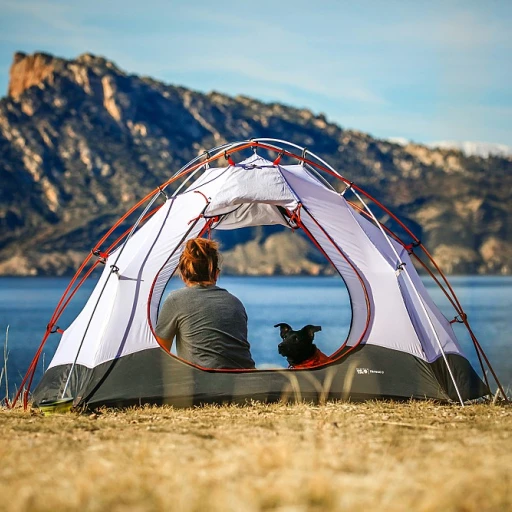
Understanding the Role of Boot Shoelaces
The Purpose of Shoelaces in Hiking Boots
For outdoor enthusiasts and seasoned hikers, shoelaces might seem like a simple accessory, but they play an indispensable role in providing the necessary support and security during your hiking adventures. It’s not just about keeping your boots on; it’s about ensuring your feet are well-supported and comfortable.
Shoelaces contribute significantly to the overall performance and fit of your hiking boots. The right laces can prevent slippage and are crucial in securing your foot snugly into the boot, minimizing friction and reducing the risk of blisters. This is especially vital for those long treks where comfort is paramount.
Moreover, the type of laces used can influence other factors such as ease of tying and retying on the go. This is particularly important whether you're scaling peaks or trekking through forests, and having reliable shoelaces can mean the difference between a miserable hike and a comfortable, enjoyable one.
Therefore, understanding the importance of shoelaces in ensuring a secure fit and preventing discomfort is the first step in choosing the right boot laces for your needs. A variety of factors, from the materials used to innovative tying techniques, play into this decision-making process. Additionally, durable shoelaces that withstand heavy-duty use while maintaining their integrity can be critical for those who frequently venture out on demanding trails.
Materials Matter: Choosing the Right Shoelace Material
Exploring Various Shoelace Materials for Optimal Performance
When it comes to choosing laces for your boots, the material of the shoelace is just as important as the boot itself. The right material can make a world of difference in terms of durability, flexibility, and overall hiking comfort. Boot laces have evolved significantly, and today, there's a myriad of options available, each offering its own unique benefits for hiking enthusiasts
For those who prioritize strength and durability in challenging terrains, heavy-duty laces, such as those made from a Kevlar blend, are invaluable. These laces are designed to withstand the harshest conditions, ensuring that they can take on rock-strewn paths and frequent abrasions without snapping.
In contrast, some hikers may prefer the classic elegance and functionality of round waxed shoelaces. These are ideal for keeping your boots' fit snug, reducing the likelihood of slippage. Additionally, waxed cotton laces offer a natural aesthetic with added water resistance.
Furthermore, the advent of the flat waxed shoelace addresses the need for resistance and style. Flat laces tend to stay tied longer and fit seamlessly into the lace loops, making them an excellent choice for prolonged hiking excursions.
- Flat waxed laces for enhanced grip and water resistance.
- Kevlar blend laces for immense strength and durability.
- Laces brown as an option for those seeking a more rustic or official look.
It’s essential to remember that the composition of your laces affects more than just durability. The price can vary significantly based on the material chosen, and it's worth investing in a premium product if you’re a frequent hiker. For thorough articles that explore more options in elevating your hiking experience, consider reading about top inserts to enhance your hiking boot experience.
Choosing the optimal lace type aligns closely with the function and form of your hiking boots. Keep in mind the terrain and environmental conditions you typically encounter to make the most informed decision.
Lacing Techniques for Optimal Support
Achieving Stability and Comfort Through Correct Lacing Techniques
When it comes to hiking, employing the right lacing techniques can significantly impact your overall comfort and stability. Properly laced boots not only ensure that your feet remain secure but also help prevent painful blisters and abrasions during those long treks.
Here are some essential lacing tips to keep in mind as you prepare for your next hiking adventure:
- Lace Length: Before anything else, ensure that your laces are the correct length. Typically, 54-inch shoelaces are ideal for low-cut shoes, while taller boots may require up to 72 inches. Be sure to consider the boot design and the right insole for additional comfort.
- Cross-Lacing Technique: This is a straightforward method involving alternating laces over and under to achieve even tension across the boot. Choose boot laces, such as round or flat waxed cotton laces, for a snug fit that holds up even under heavy duty conditions.
- Loop and Lock Lacing: For added ankle support, try the loop and lock technique. Bring the lace through the top eyelet, loop it around itself, and pull tight. This technique is beneficial for work hiking and heavy duty tasks where extra stability is paramount. It is particularly effective when using round waxed or kevlar blend laces due to their durability.
- Tie Shoelaces Securely: Whether you're using leather laces, brown or black laces, ensuring a tight, secure tie is essential. A double knot provides additional security and prevents frustrating situations where shoelaces come undone on the trail.
In reviews, experienced hikers often highlight the importance of proper lacing techniques to enhance boot performance. Investing in premium laces can elevate your overall hiking experience, ensuring that your footwear maintains its optimal functionality.
Common Problems with Boot Shoelaces and How to Solve Them
Identifying and Resolving Shoelace Issues
For hikers venturing into the wilderness, understanding potential issues with boot shoelaces is paramount. Whether you’re lacing up heavy duty boots or tying durable shoelaces on your work boots, facing common problems is part of the journey. Here’s how to navigate issues with laces efficiently.
Premature wear and tear: This is a frequent issue, especially if your shoelaces are not designed for the demanding conditions of hiking. Opt for premium boot lace options like waxed cotton or kevlar blend to enhance durability. For those using flat waxed or round waxed laces, ensure they are specifically designed for the type of terrain you'll be tackling.
Slipping and loosening: Although effective lacing techniques can ease this problem, your lace material plays a pivotal role. Cotton shoelaces might not provide the necessary grip when wet, whereas laces with wax can offer better hold. Experiment with lacing methods and consider using lock laces for added security.
Lace breakage: Breakage is indeed a significant concern. When preparing for a hike, having replacements like unbreakable boot laces at hand is wise. Heavy duty leather laces or those made from a kevlar blend are known for their resilience, making them a reliable choice for intensive use.
Lastly, it's vital to incorporate regular maintenance tips to prolong the lifespan of your shoelaces. Regular checks and cleaning of your laces, regardless of whether they are laces black, laces brown, or any other color, can prevent potential issues before they start. Investing in high-quality shoelaces may have a slightly higher price, but the benefits in reliability and performance make this an exceptional product choice for every hiking adventure.
Innovative Shoelace Technologies
Embracing New Lacing Innovations
In recent years, the market for boot laces has seen an evolution, introducing innovative technologies that enhance the hiking experience. These developments provide opportunities for both experienced hikers and outdoor enthusiasts to find laces that meet their specific needs.
A notable advancement is the introduction of lock laces, which address the common problem of laces coming undone during hikes. Ideal for those who dislike stopping frequently to retie laces, these locking mechanisms offer unparalleled security, allowing hikers to focus on the trail. Another noteworthy innovation is the rise of waxed cotton laces, which blend durability with water resistance. With a wax coating, these laces are less likely to retain water, making them perfect for wet conditions.
For those seeking out heavy duty options, kevlar blend laces provide exceptional strength and longevity. Designed to withstand the rigors of tough terrains, these laces are an excellent fit for work boots and are favored by many due to their resistance to wear and tear.
Additionally, many products now offer a variety of lace types including flat waxed laces for a sleek appearance, as well as round waxed laces for a more traditional look. Whether it's choosing laces black for universal appeal or laces brown to match a favorite pair of boots, there's a well-reviewed product available for every preference.
The innovations in shoelace technology not only enhance the practical aspects of hiking but also cater to a range of style and durability preferences, ensuring that your investment in hiking footwear is complemented by premium, durable shoelaces.
Maintenance Tips for Prolonging Shoelace Life
Caring for Your Boot Shoelaces: Key Tips and Considerations
Maintaining shoelaces is just as crucial as selecting the right boot shoelaces for those intense hiking adventures. This attention to maintenance ensures that your laces remain durable and reliable, whether they are premium round waxed cotton or heavy duty Kevlar blend options. Here are some tips to help you extend the life of your boot shoelaces effectively.
- Regular Cleaning: Dirt and debris can accumulate on your laces over time, especially if you frequently tackle muddy or dusty trails. A simple routine of removing and hand washing them with mild soap can maintain their integrity. Avoid bleach or harsh detergents as they may weaken the laces.
- Inspect and Replace: Always check for signs of wear or damage, such as fraying or thinning areas. Round waxed or leather laces, commonly used with dress shoes or work boots, can deteriorate with exposure to elements. Early replacement of worn laces for any boot category, be it hiking boots or dress shoes, is crucial to avoid unexpected breaks during use.
- Proper Drying Techniques: After cleaning, ensure your laces dry completely before re-lacing your boots. Direct sunlight or excessive heat can be damaging, especially for waxed cotton or leather options. A cool, shaded area is best for drying.
- Wax Application: For those with round waxed or flat waxed laces, periodic application of wax can enhance their water resistance, an essential feature when hiking in wet conditions. This helps maintain their heavy-duty characteristics.
- Secure Tying Methods: Techniques like the lock laces method not only enhance support but also reduce wear from frequent tying and untying. This can prolong the lace's life and ensure consistent tension while hiking.
Regular maintenance paired with the right lacing technique contributes significantly to the overall performance and longevity of your boot laces. Investing time in these practices means you'll always have reliable ties, whether you're lacing up for an everyday walk in sneakers or gearing up for a trek in your sturdy hiking boots.

![Round Boot Laces [1 Pair] Heavy Duty and Durable Shoelaces for Boots, Work Boots & Hiking Shoes 54 inches (137 cm) Black/Brown](https://www.hiking-boots.net/storage/464574/conversions/91UXBZHz-7L._AC_SL1500_-medium.webp)
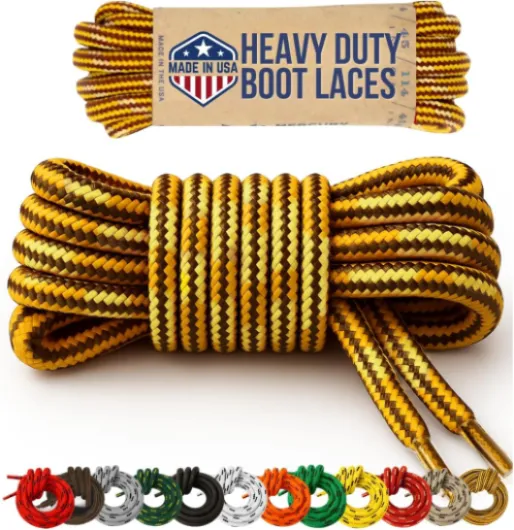
![Round Shoelaces [2 Pairs] Heavy Duty Boot Shoe Laces for Hiking Work Boots 55Inch(140CM) Dots Coffee Khaki](https://www.hiking-boots.net/storage/464565/conversions/81msMn-3oGL._AC_SL1500_-medium.webp)
![Round Boot Laces [1 Pair] Heavy Duty and Durable Shoelaces for Boots, Work Boots & Hiking Shoes 54 inches (137 cm) Blue/Black](https://www.hiking-boots.net/storage/464557/conversions/81696aA7qbL._AC_SL1500_-medium.webp)

